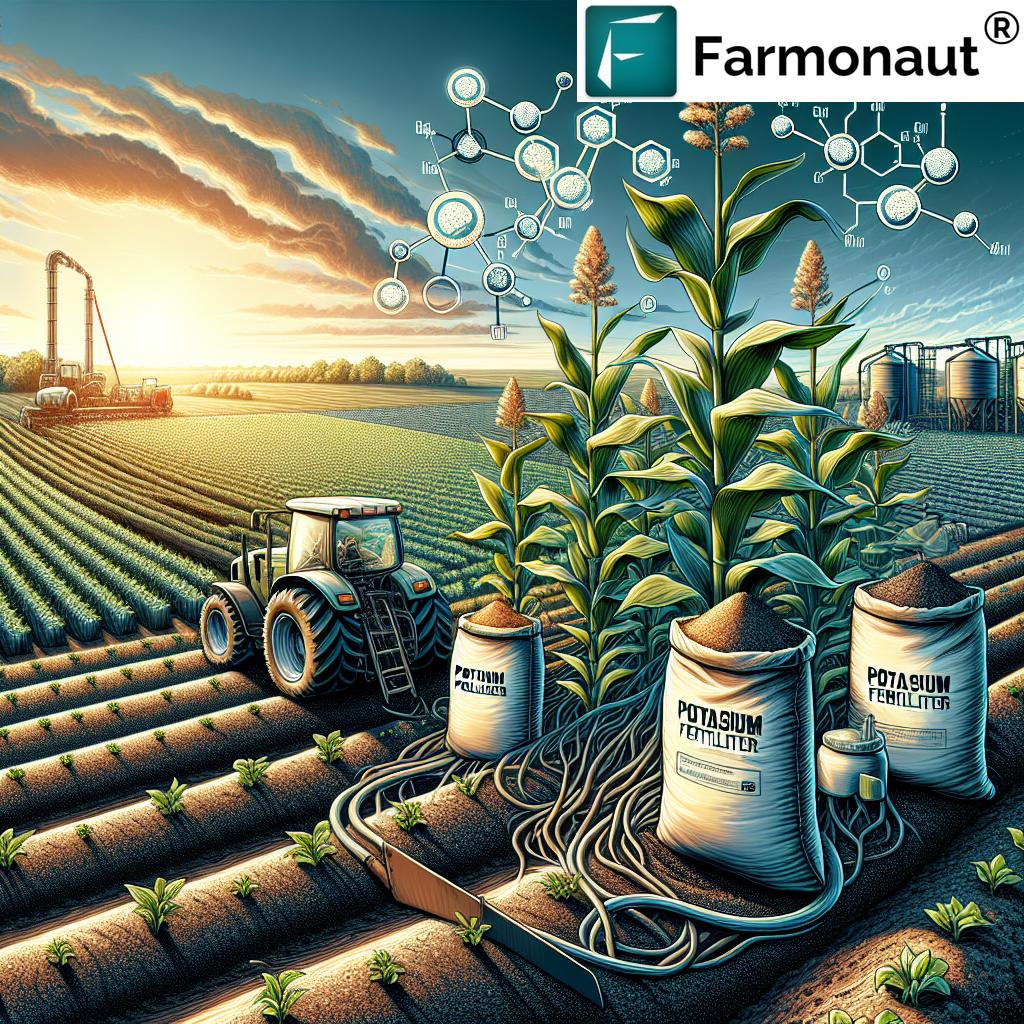Blackspot on Plants: 7 Innovations for 2025 Crop Health
“Blackspot can reduce plant yield by up to 50% annually; 7 new technologies aim to slash losses in 2025.”
Blackspot on Plants: Understanding and Managing a Persistent Agricultural Challenge in 2025
Blackspot on plants remains, even in 2025, one of the most prevalent and damaging plant diseases affecting agriculture and horticulture worldwide. Characterized by dark, necrotic lesions on leaves, stems, and sometimes on fruits, blackspot is primarily caused by various fungal pathogens. Its impact extends far beyond aesthetics—threatening crop yields, quality, food security, and sustainable farming gains already hard-won.
With climate conditions in 2025—especially intensified humidity, altered rainfall patterns, and persistent environmental pressures—creating a perfect breeding ground, the threat is growing. Farmers, agricultural researchers, and industry stakeholders urgently need innovative solutions and sustainable practices for blackspot management.
In this comprehensive guide, we explore the latest advances in detection, prevention, and control—spotlighting 7 key innovations already transforming blackspot management in 2025’s evolving agriculture.
Causes and Symptoms: Blackspot on Plants & Fungal Pathogens
The classic cases of blackspot on plants are mostly caused by fungi, with the genus Diplocarpon—specifically Diplocarpon rosae, the primary causative agent of blackspot in roses—being the most notorious. However, the disease also affects a wide range of plants, including tomatoes, citrus, certain legume crops like beans, vegetables, and even commercial fruit plantations.
How Blackspot Develops on Plants
- Conditions: The fungi thrive in warm, humid environments.
- Spread: Spore dispersal happens rapidly via wind or water splashes.
- Initial Infection: The fungal pathogens infect leaves, especially on their upper surface.
Typical Symptoms and Signs
- Black or purple spots first appear, small and circular on leaf surfaces.
- Spots Enlarge, sometimes merge, and often exhibit concentric rings—giving the hallmark “target spot appearance”.
- Necrotic lesions develop, leading to premature leaf drop and defoliation.
- Weakened stems and, in severe cases, plant death may occur.
- In tomatoes and other commercial crops, spots can also appear on fruits and stems, degrading quality and marketability.

The Impact of Blackspot on Agriculture in 2025
The agricultural significance of blackspot is greater now in 2025 due to:
- Climate change increasing humidity and altering rainfall patterns in many vital growing regions, such as Southeast Asia, South America, Africa, and Mediterranean zones—creating ideal environments for fungal proliferation.
- Widespread susceptibility among key crops like tomatoes, beans, and vegetables, which are integral to food security.
- Significant economic losses and reduced yields, especially in resource-limited regions.
- A chronic challenge to sustainable farming goals, as increased outbreaks lead to overreliance on fungicides. This intensifies chemical resistance, potential environmental damage, and residual toxicity issues.
Blackspot disease is a direct threat to ongoing sustainable agriculture, pushing farmers and researchers to discover better, cleaner, and more resilient solutions.
7 Innovations Redefining Blackspot on Plants Management in 2025
Below are seven cutting-edge advances driving the next leap forward in blackspot on plants management, detection, and sustainable prevention:
-
1. Molecular Early Detection: CRISPR & Isothermal Diagnostics
Breakthrough: Portable field kits now allow rapid, accurate detection of blackspot fungal DNA—before symptoms are visible.
- Technologies like CRISPR-based molecular assays and isothermal amplification are increasingly affordable and easy to deploy.
- This early warning enables timely, targeted intervention, minimizing disease spread and reducing overall impact on crops.
-
2. Smart Disease Monitoring: AI & Satellite-Based Advisory
With AI-powered satellite imagery analysis (such as that offered through Farmonaut), farmers can monitor plant health, detect stress, and predict onset of blackspot outbreaks across entire fields, rapidly and remotely.
- Combines historical weather, vegetation vigor (NDVI), and confirmed blackspot infection data for instant actionable alerts.
- Farmonaut’s Jeevn AI Advisory System provides tailored recommendations for timely, sustainable interventions.
Learn how blockchain traceability can build trust in your agricultural supply chain.
-
3. Biological Control Agents: Harnessing Beneficial Microbes
As fungicide resistance grows, biological controls using beneficial microorganisms such as Bacillus subtilis and Trichoderma are gaining ground. These agents:
- Compete with, antagonize, or disrupt fungal pathogens on plant tissues.
- Can be formulated into seed treatments, foliar sprays, or soil amendments for both row crops and horticulture.
- Reduce fungicide dependency and boost environmental sustainability scores.
-
4. Resistant Cultivars: Advanced Genomics & Rapid Breeding
The rapidity and precision of gene-editing tools like CRISPR-Cas9 have slashed the time required to create blackspot-resistant plant varieties.
- Tomatoes with resistance to blackspot, and commercially available roses less susceptible to Diplocarpon rosae, are now entering markets in 2025.
- Such resistant cultivars can greatly reduce the need for chemical protection in both commercial and home gardens.
-
5. Advanced Spray Technologies & Next-Gen Fungicides
Innovations like low-drift nozzles, sensor-guided sprayers, and new biological and synthetic fungicide formulas increase efficacy while minimizing environmental contamination.
- Drones and precision application technologies help deliver minimal effective doses precisely where needed.
- This approach supports integrated pest management (IPM) strategies, reducing over-application, and helping preserve fungicide efficacy.
- Explore how Farmonaut enables carbon footprint tracking for more responsible crop treatment decisions.
-
6. Cultural & Agronomic Practices: Smarter, Sustainable Habits
Integrating traditional wisdom with science-based recommendations remains crucial:
- Practices like crop rotation, removal of infected debris, adequate plant spacing, and optimized drip irrigation significantly reduce blackspot risk.
- Smart irrigation prevents overly humid microclimates favorable to fungal growth.
- Adapting to region-specific weather patterns helps anticipate and pre-empt outbreaks.
-
7. AI-Powered Predictive Modelling & Digital Advisory Platforms
Pioneering AI tools (including those on the Farmonaut platform) are transforming decision-making for farmers:
- Combine real-time satellite data with historical disease maps and weather feeds to predict outbreaks.
- Offer tailored risk assessments and action plans to maximize yield and cut losses.
- These digital tools are accessible via mobile and web, empowering small and large farms alike.
- Discover options for large-scale farm management and disease tracking using Farmonaut’s Agro Admin App.
“Innovative solutions in 2025 target early blackspot detection, cutting response time by 40% compared to traditional methods.”
Innovations Comparison Table: Managing Blackspot on Plants in 2025
| Innovation Name | Description | Estimated Efficacy (% Reduction in Blackspot) | Implementation Difficulty | Sustainability Score (1–5) | Projected Year of Mainstream Adoption |
|---|---|---|---|---|---|
| Molecular Early Detection (CRISPR, Isothermal) | Portable kits for pre-symptomatic detection of fungal DNA in plants and crops. | 60–80% | Moderate | 4.5 | 2025 |
| Smart Satellite & AI Monitoring | Real-time field diagnostics with satellite and AI advisory for proactive blackspot management. | 55–75% | Easy | 5 | 2025 |
| Biological Control Agents | Beneficial bacteria/fungi like Bacillus and Trichoderma suppress blackspot infection and spread. | 45–65% | Moderate | 5 | 2025 |
| Resistant Cultivars (Gene Editing) | CRISPR & molecular breeding accelerate development of disease-resistant varieties like tomatoes and roses. | 70–95% | Challenging | 4 | 2026 |
| Next-Gen Fungicides & Targeted Application Tech | Innovative biologicals/synthetics, low-drift and AI-guided delivery for blackspot control. | 50–80% | Moderate | 3.5 | 2025 |
| Cultural & Agronomic Practices | Smart crop rotation, debris removal, proper irrigation reduce favorable conditions for blackspot. | 25–45% | Easy | 5 | 2025 |
| AI-Powered Predictive Modelling | Digital platforms for early risk alerts and precision intervention using multi-source data. | 40–65% | Moderate | 4.5 | 2026 |
Farmonaut: Leveraging Satellite Technology Against Blackspot on Plants
At Farmonaut, we recognize blackspot as a persistent agricultural challenge that threatens the future of food security and sustainable farming. Our satellite-driven solutions empower farmers, agronomists, and agri-businesses to stay ahead of fungal diseases like blackspot through:
- Real-time crop monitoring:
- Our platform delivers field-level health assessments, stress indices, and vegetation anomaly mapping.
- This enables timely detection of disease spread and identification of vulnerable zones.
- AI-based advisory systems:
- Jeevn AI supplies location-specific alerts & recommendations for preventive and curative actions against blackspot and similar diseases.
- Farmonaut’s system also supports crop loan and insurance verification, enabling growers to access financial products swiftly and securely.
- Blockchain traceability:
- Enhances supply chain transparency, ensuring products are sourced from reliably managed fields with minimized blackspot risk.
- Environmental and resource management:
- We empower agricultural businesses to monitor their carbon footprint and implement sustainable interventions—contributing to both productivity and planetary health.
- Use our fleet management solutions for smarter logistics and timely delivery of crop treatments and resources.
Accessible on Android, iOS, web platform, and through API (with developer docs here), our tools drive both economic and environmental sustainability for 2025 and beyond.
Sustainable Practices for Blackspot Management and Crop Health
While advanced technology is revolutionizing disease control, sustainable cultural practices remain at the heart of effective blackspot management for plants in 2025.
- Crop rotation: Rotating with non-host crops reduces inoculum buildup in soil.
- Debris management: Timely removal and proper disposal of infected plant material limits fungal spread.
- Optimized irrigation: Drip systems lower humidity at canopy level, as opposed to overhead sprinklers that facilitate spore movement.
- Smart plant spacing: Appropriate distance between plants facilitates airflow and faster drying, reducing infection risk.
- Resilient seed selection: Choosing and propagating resistance-bred varieties when available.
- Regular scouting: Using mobile-based platforms or drone imagery to rapidly identify and isolate outbreaks.
Integrated management—combining technology with sustainable agronomy—will be the cornerstone of resilience against blackspot and other persistent fungal plant diseases for the next decade.
Ongoing Challenges in Blackspot Disease Control & The Future Outlook
Despite remarkable advances, several challenges remain in blackspot management for the decade ahead:
- Accessibility: High-tech diagnostics, resistant cultivars, and biocontrols may still be out of reach for resource-limited farmers especially in developing regions.
- Climate unpredictability: Global warming and increasingly erratic weather continue to create new disease scenarios and adaptation pressures on crops and agricultural systems.
- Resistance management: Ongoing fungicide resistance development necessitates careful stewardship and the integration of new modes of action.
- Data integration: Merging farmer knowledge, biotechnology, and digital insight for holistic crop & disease management.
- Education & training: Widespread adoption of next-gen solutions requires support for grower education and capacity-building.
The continued research efforts in pathogen genomics, digital agriculture, and sustainable crop systems promise an optimistic outlook for blackspot and broader plant disease management—as long as collaboration and accessibility improve worldwide.
Frequently Asked Questions: Blackspot on Plants & Sustainable Management
- What is blackspot on plants and why is it a major concern in 2025?
- Blackspot is a fungal disease primarily caused by pathogens like Diplocarpon rosae. In 2025, it remains a top threat due to changing climate conditions that favor its proliferation, leading to significant yields losses and ongoing challenges in sustainable agriculture worldwide.
- What early signs and symptoms indicate blackspot infection?
- Early symptoms include small black or purple spots on leaf surfaces which grow, merge, and form rings, eventually leading to necrotic lesions, leaf drop, and possible stem or fruit spotting in severe cases.
- How can farmers practice sustainable blackspot management?
- Combine early detection (like AI-satellite monitoring or molecular kits), biological controls, resistant varieties, and cultural habits like crop rotation/debris removal and drip irrigation. Use digital advisory platforms like Farmonaut for timely intervention and sustainability tracking.
- Are blackspot-resistant tomatoes and roses available in 2025?
- Yes, thanks to genome editing and rapid breeding, several commercial varieties of tomatoes, roses, and more offer enhanced resistance to blackspot and are increasingly available across markets.
- How is technology making blackspot control more effective?
- Technology provides real-time disease detection, predictive analytics, targeted treatment, and remote advisory—increasing response speed, reducing chemical usage, and improving both crop health and environmental outcomes.
- Where can I access Farmonaut’s blackspot and crop health tools?
- Farmonaut technologies can be accessed via web app, Android, and iOS platforms. API and developer docs are here and here.
Get Started: Blackspot Monitoring, Crop Health, and Sustainable Growth with Farmonaut
Ready to elevate your plant and crop health? With the right technologies, smarter agricultural practices, and the latest crop management innovations—defeating blackspot is achievable for every grower, farm manager, and agronomist in 2025 and beyond.
- Monitor your fields with satellite-driven insights
- Receive AI-powered advice for blackspot and overall health
- Track your environmental sustainability with one dashboard
- Access blockchain-based traceability for market confidence
- Empower your team with mobile and web-based field health diagnostics
Start your journey here:
For professional users or developers, explore our Farmonaut API and full documentation here.
Ready to scale? Try Agro Admin for large scale farm management or our advanced crop loan and insurance verification solutions!
Summary: Blackspot on plants remains an ongoing, persistent agricultural challenge in 2025, threatening yields, environmental health, and the economics of growers worldwide. Characterized by dark, necrotic lesions caused primarily by fungal pathogens, its management demands the integration of the latest technology and sustainable practices. Innovations in early detection, biological controls, genomics, smart digital monitoring, and improved agronomy offer real hope for managing resistance and protecting crops. Farmonaut’s satellite-based solutions, AI advisories, and data-driven tools are at the forefront—empowering all stakeholders to achieve better crop health, sustainable yields, and food security in an era of mounting climatic pressures.












